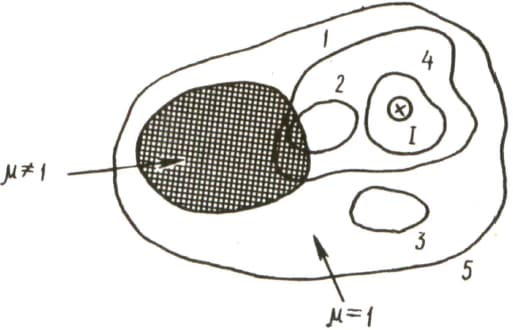L.A.Sena Solutions for Chapter: Electromagnetism, Exercise 1: Exercise
L.A.Sena Physics Solutions for Exercise - L.A.Sena Solutions for Chapter: Electromagnetism, Exercise 1: Exercise
Attempt the practice questions on Chapter 5: Electromagnetism, Exercise 1: Exercise with hints and solutions to strengthen your understanding. A Collection of Questions and problems in Physics solutions are prepared by Experienced Embibe Experts.
Questions from L.A.Sena Solutions for Chapter: Electromagnetism, Exercise 1: Exercise with Hints & Solutions
Two similar parallel electron beams point in the same direction. The linear dimensions of the cross section of each beam are small compared to the distance between the beams. Suppose that is the electron velocity and is the electron concentration in either beam. In a coordinate system with respect to which the electrons are in motion there are two types of interactions, the electrostatic and the magnetic. Which of the two is greater in magnitude?
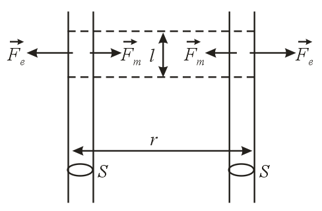
Electric charges do not generate a magnetic field in a system of coordinates (better to say, frame of reference) where they are at rest. The magnetic field that surrounds a conductor carrying a current is generated by the charges that are moving in the conductor. Since the electron concentration in a conductor is of the order of , the directional velocity of the electrons in the conductor is of the order of one millimeter per second (if the current density is estimated at ). We position the conductor carrying the current in such a manner that it follows the magnetic meridian at the point where the conductor is present. Just as in Oersted's experiment, a magnetic compass needle placed under the conductor will be deflected. If the needle is moved along the conductor with a speed equal to the directional velocity of the electrons in the conductor (i.e. of the order of several millimeters per second), the electron will be at rest in relation to the needle and, since the magnetic field in the system connected with the needle must be nil, the needle will not be deflected. More than that, if the needle is moved along the conductor with a speed greater than that of the electrons, the needle will be deflected in the opposite direction. Are these assertions correct?
How are the magnetic induction vector and the magnetic field vector directed inside and outside a bar magnet?
Two types of steel are characterized by the hysteresis loops shown in Figure. The loops are obtained in the processes of magnetization and demagnetization of the steels. Which of the two types is best suited for using as the core of a transformer and which, for using as a permanent magnet?
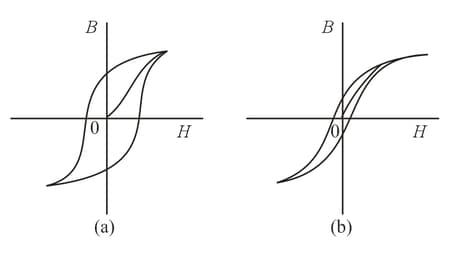
How can one use the vs. graph (the magnetization curve) to determine the work that a source of current must perform to magnetize a ferromagnetic core of a solenoid whose length is and whose cross-sectional area is ? The magnetization curve is shown in the figure accompanying the problem.
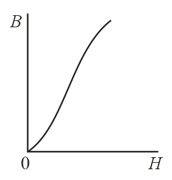
Does a hysteresis loop possess sections in which we can formally assign to permeability a value that is zero or infinite or negative?
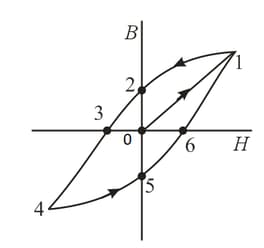
A straight conductor passes through a ferromagnetic toroid, as shown in the figure accompanying the problem. The conductor carries a current that first grows to a certain maximal value and then falls off to zero, as a result of this the toroid becomes magnetized. Indicate the directions of the lines of force for magnetic induction in the toroid and find the sections or points on the hysteresis loop corresponding to the state of the toroid after the current has ceased to flow.
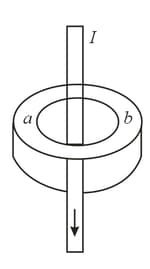
Suppose we wish to calculate the circulation integrals of the magnetic field strength and magnetic induction along various contours, some of which lie entirely in a vacuum while the other partially overlap a medium with a permeability . The "" inside a small circle marks the section of a conductor carrying a current by the plane of the drawing. Are all the circulation integrals of the magnetic induction equal to each other? Is this also true of the circulation integrals of the magnetic field strength?
